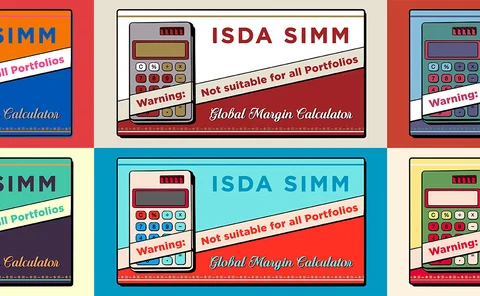Model validation
The validation of different systemic risk measurement models
The authors incorporate a capital buffer to the DebtRank model and use data from China's banking industry to compare the proposed model with others.
US falls behind in race to match Europe’s FRTB launch date
Recent US bank failures could jeopardise planned January 2025 start date for Basel III
Performance validation of representative sample-balancing methods in loan credit-scoring scenarios
The authors validate 12 of the most representative sample-balancing methods used for credit-scoring models, finding that a combined SMOTE and Editor Nearest Neighbor method is optimal.
Bot’s job? Quants question AI’s model validation powers
But supervisors cautiously welcome next-gen model risk management
Quantification of model risk with an application to probability of default estimation and stress testing for a large corporate portfolio
This paper discusses the building of obligor-level rather than segment-level hazard rate corporate probability of default models for stress testing.
Machine learning models: the validation challenge
Machine learning models are seeing increasing demand across the capital markets spectrum. But how can firms improve their chances of gaining internal and regulatory approval for these type of models?
PRA’s pot shots threaten Simm’s global ubiquity
UK regulator’s push to improve model governance could tip non-cleared derivatives market into chaos
General bounds on the area under the receiver operating characteristic curve and other performance measures when only a single sensitivity and specificity point is known
Using a single true positive - true negative pair, the author shows how to calculate the area under a ROC curve.
Covid chaos spurs on search for model risk aggregation
Many models failed in pandemic, but analysing them in clusters easier than whole-bank view
Predicting financial distress of Chinese listed companies using a novel hybrid model framework with an imbalanced-data perspective
In this paper a novel hybrid model framework is constructed to solve the problem of predicting the financial distress of Chinese listed companies using imbalanced data.
EU’s IM model validation rules may put Simm in jeopardy
Draft RTS creates validation hurdles and cross-border conflicts, industry warns
Evaluation of backtesting techniques on risk models with different horizons
In this study different value-at-risk (VaR) models are analyzed under different estimation approaches (filtered historical simulation, extreme value theory and Monte Carlo simulation) and backtested with different techniques.
Rethinking the model lifecycle: from quick fixes to long-term gain
Covid-19 has caused widespread disruption to banks’ risk models. Some failed in the crisis while others have required significant overlays or frequent recalibration as extreme volatility has given way to ongoing uncertainty. As banks seek more agile…
Stronger together: CLS’s chief risk officer on risk culture
Deborah Hrvatin discusses integrated risk management, mega-hacks and model risk
Show your workings: lenders push to demystify AI models
Machine learning could help with loan decisions – but only if banks can explain how it works. And that’s not easy
Sharpening the tools – Preparation for UMR phase five
A forum of industry leaders discusses the suitability of Simm for phase five firms, how they can optimise portfolios to minimise margin costs and how the lessons learned from previous phases can help them prepare
Banks fold climate, pandemic and cyber risks into CCAR
OpRisk North America: anchoring idiosyncratic risks to macro scenarios a challenge, say experts
Benchmarking operational risk stress testing models
This paper outlines several approaches to benchmarking operational loss projections under stressed scenarios using both accounting metrics and historical loss experience.
A tale of two (or three, or four) models
Performance measure based on quality of replicating portfolios outperforms ‘P&L explain’, new paper claims
Singapore banks tighten ML governance amid regulatory scrutiny
DBS, StanChart and Deutsche build model inventories and draw up standards around use cases
Outsourced model validation: is it viable?
Consortium promises cost savings in outsourcing model validation, but some say pooling doesn’t float
How AI can automate model validation testing and continuous monitoring
As the business environment becomes more complex – and as regulatory scrutiny increases – it has never been more crucial for financial institutions to ensure their models are robust and fit for purpose.
Initial margin – A regulatory bottleneck
With the recent announcement of an extended preparation period for those smaller entities needing to post initial margin under the uncleared margin rules, the new timetable could cause a bottleneck for firms busy repapering derivatives contracts linked…
Validation of index and benchmark assignment: adequacy of capturing tail risk
This paper provides practical recommendations for the validation of risk models under the Targeted Review of Internal Models (TRIM).
















